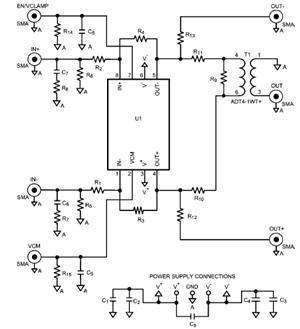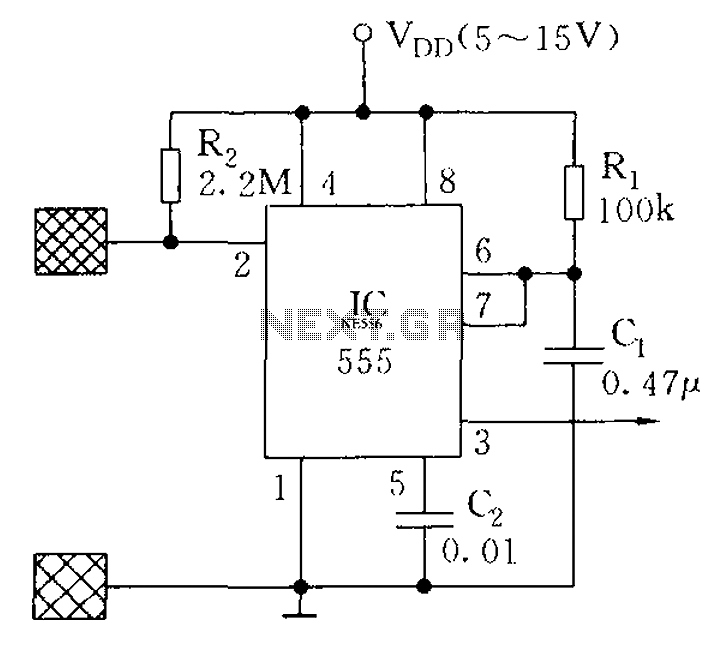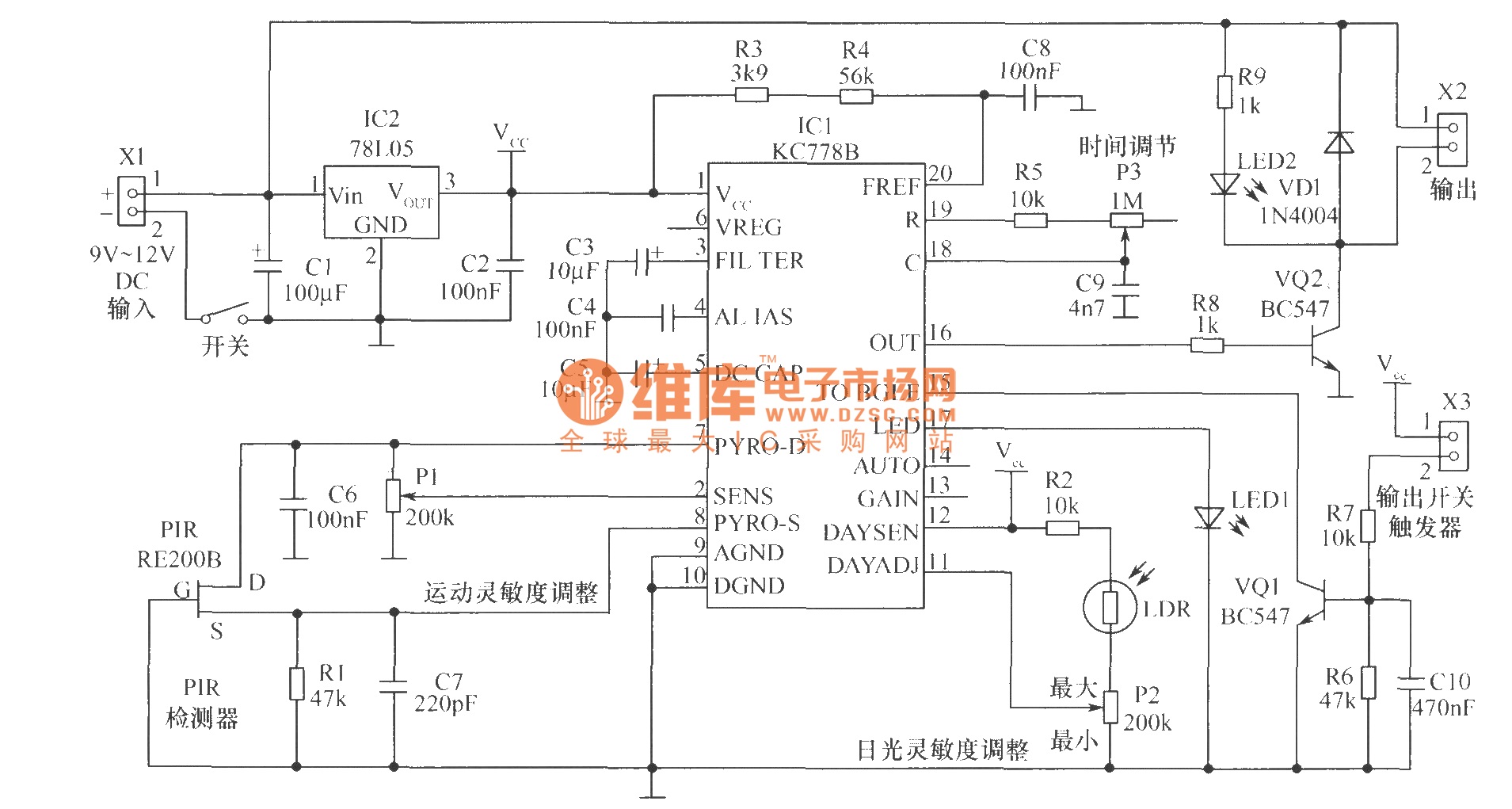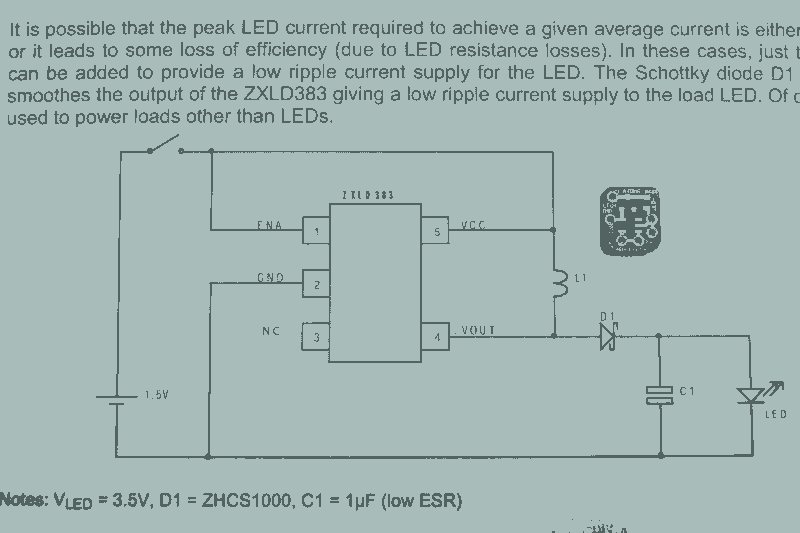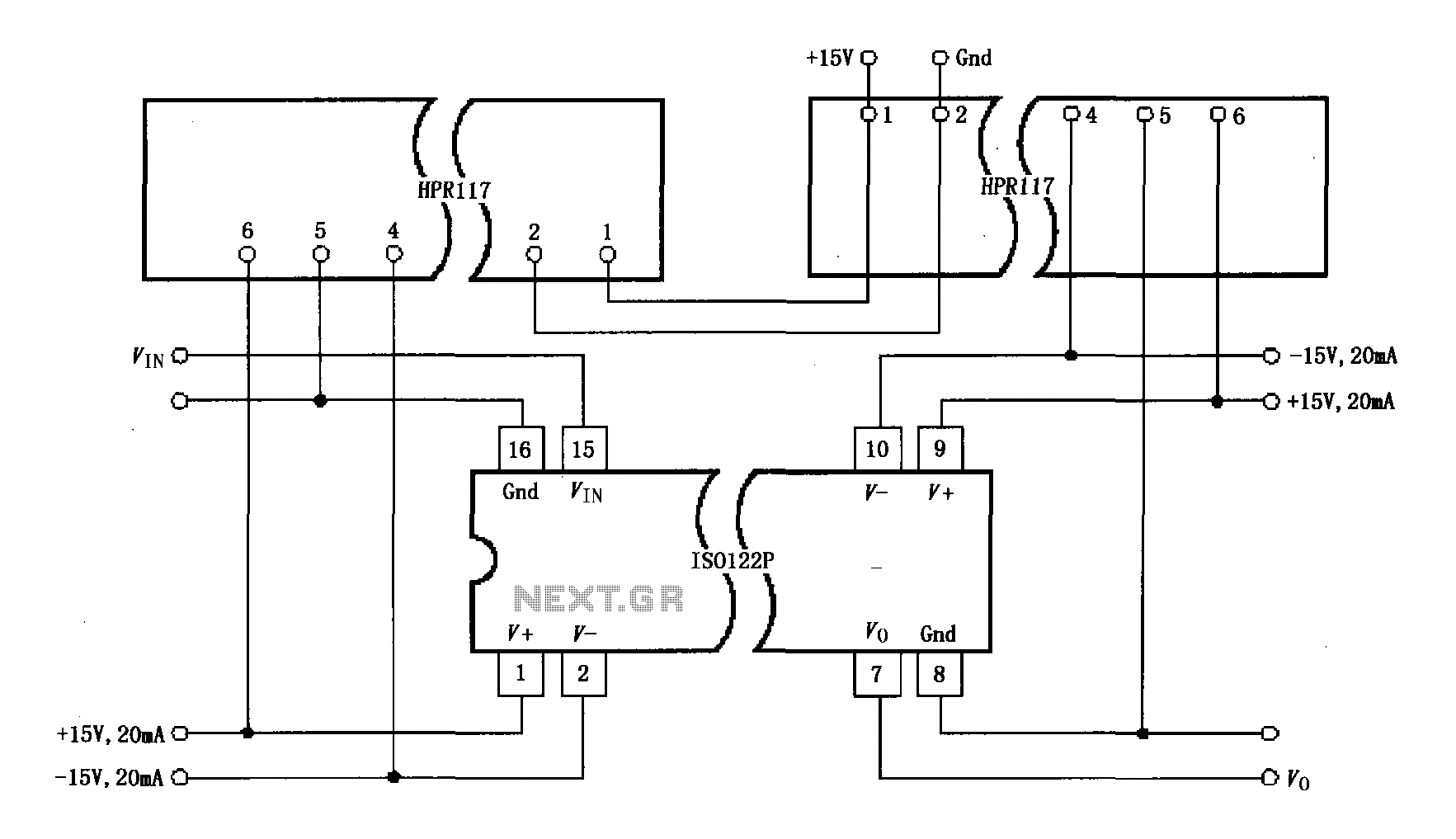
Make a Simple Machine Gun Sound Effect Generator Circuit
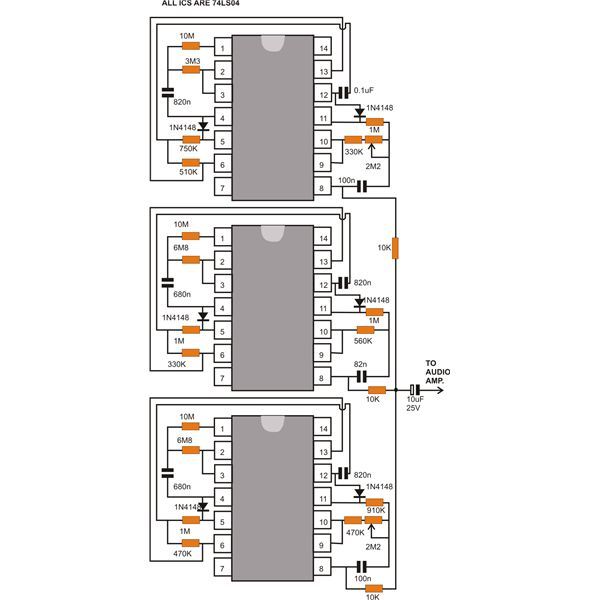
This document discusses a compact machine gun sound effect generator circuit. Once constructed, it can be integrated with any audio amplifier to create a realistic war-like simulation. This small hobby project is suitable for all electronics enthusiasts and generates an interesting machine gun sound effect through a connected loudspeaker. The circuit effectively imitates sound effects found in many action-packed computer war games. Players of action games, such as Delta Force and Hitman, appreciate not only the visuals but also the machine gun sound effects. Although modern technology often utilizes a single chip to create various audio sounds, building a circuit from discrete components can also be enjoyable. This guide focuses on a simple machine gun sound effect generator circuit using three 74LS04 ICs and a few other passive components. The 74LS04 is a hex NOT gate IC that contains six NOT gates or inverters in one package. Each gate has two terminals: one input and one output. The output logic is the inverse of the input level. The pulses produced at the output of each section have distinct push-pull ratios, which are combined to simulate machine gun shots. The circuit features six inverters from the IC wired as three astable multivibrators connected in series. Each astable multivibrator is linked via diodes, ensuring that the subsequent multivibrator oscillates only when the previous one is inactive. Two sections of the circuit include a potentiometer for frequency control, while the last section operates without controls. The potentiometers adjust the frequencies of the respective astable multivibrators, influencing the rate of gunfire sounds. However, the generated pulses are not sufficiently powerful to drive loudspeakers directly. Therefore, the output should be integrated with an audio amplifier to achieve the desired booming gunfire simulation. The potentiometers can be adjusted externally to optimize the machine gun sound effect. The entire circuit can be assembled on a general PCB and housed within the audio amplifier cabinet. The circuit can be powered from the amplifier's power supply.
The machine gun sound effect generator circuit consists of three primary sections, each utilizing a 74LS04 IC configured as an astable multivibrator. This configuration allows for the generation of square wave signals that simulate the rapid firing of a machine gun. The astable multivibrator operates continuously, producing output pulses that can be shaped and varied by adjusting the connected potentiometers. The use of diodes between the multivibrators ensures that the firing sequence mimics the staggered nature of actual gunfire, creating a more realistic sound effect.
In the circuit, the first two astable multivibrators are equipped with potentiometers that allow the user to control their frequency, thereby adjusting the tempo of the sound effect. The third multivibrator operates at a fixed frequency, contributing to the overall sound profile without user intervention. The output from each multivibrator is combined, resulting in a complex waveform that closely resembles the audio characteristics of a machine gun firing.
To enhance the output volume and fidelity of the sound effect, the circuit is designed to interface with an audio amplifier. This integration is essential, as the pulses generated by the multivibrators are not strong enough to drive speakers directly. By connecting the output to an amplifier, the sound can be amplified to a level suitable for playback through larger loudspeakers, providing an immersive experience.
The entire assembly can be compactly designed on a printed circuit board (PCB), which can be housed within the casing of an audio amplifier. This not only saves space but also allows for easy integration and power sourcing from the amplifier's existing power supply. The project serves as an excellent learning experience for electronics enthusiasts, demonstrating the practical application of digital logic components in sound generation.An impressive little machine gun sound effect generator circuit is discussed here. Once built can be integrated with any audio amplifier to experience a roaring bullet studded war like simulation. A small hobby project which can be tried by all electronic enthusiasts will generate interesting machine gun sound effect over the connected loudspeaker
, quite imitating the sound effects of the many action packed computer war games. We all have played TV/computer games at some period of our life and know how exciting it feels to hear the different audio effects accompanied with such games especially the ones which involve heavy arms and actions. Boys truly love playing action games like delta force, hitman and appreciate not only the visuals but also the produced machine gun sound effect.
Although our world has gone hi-tech and it requires just a single small chip to generate many intriguing audio sounds but building one such circuit using discrete components can be quite amusing too. Especially the electronic enthusiasts will love making an electronic machine gun sound generator using few CMOS ICs and some other passive components.
Here we discuss one simple machine gun sound effect generator circuit using three 74LS04 and just a handful of resistors. The IC 74LS04 is basically a hex NOT gate IC. It consists of six NOT gates or inverters in one package. Each gate has two terminals one input and one output. As the name suggests the logic generated at the output of the gates will be exactly the opposite of the received input level.
The pulses produced at the output of each section have their own distinct push pull ratios. These are integrated together and superimposed simulating exact machine gun shots. Looking carefully, the circuit reveals that the six inverters from each of the IC are wired up as three astable multivibrators connected in series to each other. The series connections of each astable are done through diodes, forcing the later to oscillate only when the previous AMV is not operating or at zero logic.
We see that two sections of the circuit include a potentiometer while the last one is without any controls. The potentiometers are used to control the frequencies of the relevant AMVs which determine the rate of gun fire sounds.
However the generated pulses lack volume and therefore is unable to drive loudspeakers directly. The terminated output may be suitably integrated to an audio amplifier to get the actual FEEL of the booming gun fire simulations. The pots may be adjusted externally to reproduce and optimize the best possible machine gun sound effect.
The entire machine gun sound effect circuit can be assembled over a piece of general PCB and fitted inside the audio amplifier cabinet. The circuit may be powered from the amplifiers power supply itself. 🔗 External reference
The machine gun sound effect generator circuit consists of three primary sections, each utilizing a 74LS04 IC configured as an astable multivibrator. This configuration allows for the generation of square wave signals that simulate the rapid firing of a machine gun. The astable multivibrator operates continuously, producing output pulses that can be shaped and varied by adjusting the connected potentiometers. The use of diodes between the multivibrators ensures that the firing sequence mimics the staggered nature of actual gunfire, creating a more realistic sound effect.
In the circuit, the first two astable multivibrators are equipped with potentiometers that allow the user to control their frequency, thereby adjusting the tempo of the sound effect. The third multivibrator operates at a fixed frequency, contributing to the overall sound profile without user intervention. The output from each multivibrator is combined, resulting in a complex waveform that closely resembles the audio characteristics of a machine gun firing.
To enhance the output volume and fidelity of the sound effect, the circuit is designed to interface with an audio amplifier. This integration is essential, as the pulses generated by the multivibrators are not strong enough to drive speakers directly. By connecting the output to an amplifier, the sound can be amplified to a level suitable for playback through larger loudspeakers, providing an immersive experience.
The entire assembly can be compactly designed on a printed circuit board (PCB), which can be housed within the casing of an audio amplifier. This not only saves space but also allows for easy integration and power sourcing from the amplifier's existing power supply. The project serves as an excellent learning experience for electronics enthusiasts, demonstrating the practical application of digital logic components in sound generation.An impressive little machine gun sound effect generator circuit is discussed here. Once built can be integrated with any audio amplifier to experience a roaring bullet studded war like simulation. A small hobby project which can be tried by all electronic enthusiasts will generate interesting machine gun sound effect over the connected loudspeaker
, quite imitating the sound effects of the many action packed computer war games. We all have played TV/computer games at some period of our life and know how exciting it feels to hear the different audio effects accompanied with such games especially the ones which involve heavy arms and actions. Boys truly love playing action games like delta force, hitman and appreciate not only the visuals but also the produced machine gun sound effect.
Although our world has gone hi-tech and it requires just a single small chip to generate many intriguing audio sounds but building one such circuit using discrete components can be quite amusing too. Especially the electronic enthusiasts will love making an electronic machine gun sound generator using few CMOS ICs and some other passive components.
Here we discuss one simple machine gun sound effect generator circuit using three 74LS04 and just a handful of resistors. The IC 74LS04 is basically a hex NOT gate IC. It consists of six NOT gates or inverters in one package. Each gate has two terminals one input and one output. As the name suggests the logic generated at the output of the gates will be exactly the opposite of the received input level.
The pulses produced at the output of each section have their own distinct push pull ratios. These are integrated together and superimposed simulating exact machine gun shots. Looking carefully, the circuit reveals that the six inverters from each of the IC are wired up as three astable multivibrators connected in series to each other. The series connections of each astable are done through diodes, forcing the later to oscillate only when the previous AMV is not operating or at zero logic.
We see that two sections of the circuit include a potentiometer while the last one is without any controls. The potentiometers are used to control the frequencies of the relevant AMVs which determine the rate of gun fire sounds.
However the generated pulses lack volume and therefore is unable to drive loudspeakers directly. The terminated output may be suitably integrated to an audio amplifier to get the actual FEEL of the booming gun fire simulations. The pots may be adjusted externally to reproduce and optimize the best possible machine gun sound effect.
The entire machine gun sound effect circuit can be assembled over a piece of general PCB and fitted inside the audio amplifier cabinet. The circuit may be powered from the amplifiers power supply itself. 🔗 External reference
